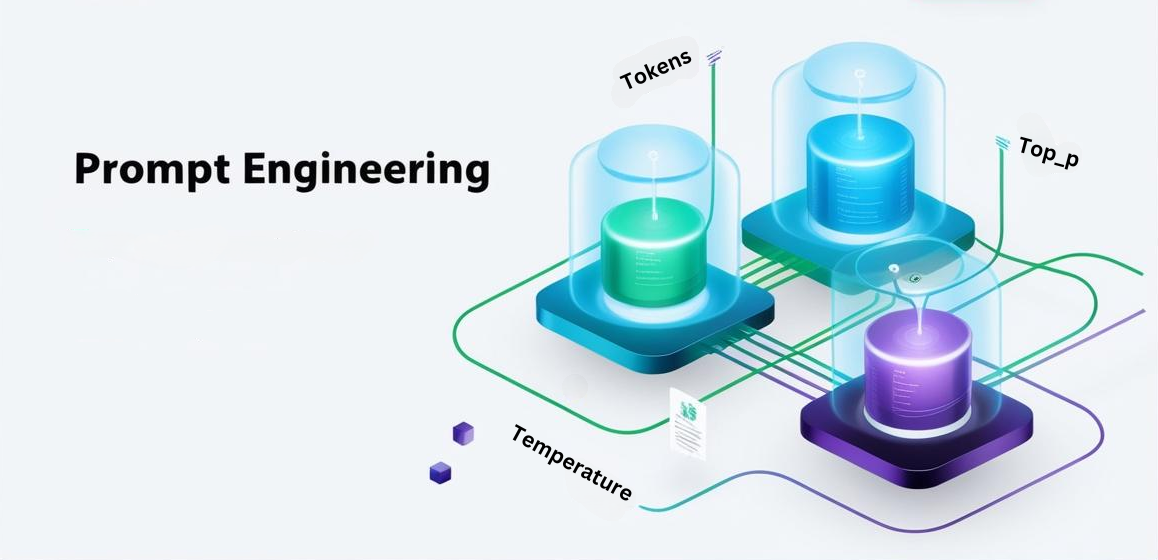1. Introduction to Prompt Engineering
1.1 What is Prompt Engineering?
Prompt engineering is the practice of designing and refining inputs (prompts) to guide generative AI systems toward producing desired outputs. It serves as a critical bridge between human intent and machine-generated results, enabling users to communicate effectively with large language models (LLMs) like GPT-4, Claude, or Gemini. By crafting precise instructions, context, and constraints, prompt engineers unlock the full potential of AI for tasks such as content generation, data analysis, and decision-making.
For example, a basic prompt like “Explain quantum computing” might yield a generic overview, while an engineered prompt such as “Explain quantum computing to a 10-year-old using analogies related to video games” produces a tailored, audience-specific response.
1.2 Why Does It Matter in the Age of Generative AI?
As generative AI becomes integral to industries ranging from healthcare to marketing, the ability to control AI outputs is paramount. Poorly designed prompts can lead to irrelevant, biased, or even harmful results, while well-engineered prompts ensure accuracy, creativity, and alignment with user goals.
Consider customer service chatbots: a vague prompt like “Respond to complaints” might generate robotic or unhelpful replies. In contrast, a structured prompt such as “Apologize for the delay in shipping, offer a 15% discount on the next order, and assure the customer their package will arrive within 48 hours” ensures brand-consistent, actionable responses.
2. Parameters in LLMs That Influence Output Contrasts
LLMs rely on adjustable parameters that significantly impact output quality and variability. Understanding these levers is key to mastering prompt engineering.
2.1 Temperature: Balancing Creativity vs. Predictability
Temperature controls the randomness of outputs. A low temperature (e.g., 0.2) makes the model deterministic, favoring high-probability words—ideal for factual tasks like medical summaries. A high temperature (e.g., 0.8) encourages creativity, useful for brainstorming marketing slogans or writing poetry.
Example:
- Temperature = 0.2: “The solar system consists of eight planets orbiting the Sun.”
- Temperature = 0.8: “Imagine a solar system where planets waltz around a star made of stardust and dreams.”
2.2 Top_p (Nucleus Sampling): Controlling Diversity and Focus
Top_p selects from the smallest set of words whose cumulative probability exceeds p. A low Top_p (e.g., 0.5) narrows choices to likely tokens, while a high Top_p (e.g., 0.9) allows more diversity.
Use Case:
- Top_p = 0.5: “The quick brown fox jumps over the lazy dog.” (Predictable)
- Top_p = 0.9: “The nimble auburn fox vaults over the snoozing hound.” (Creative)
2.3 Max Tokens: Setting Output Length Boundaries
Max tokens limit response length. For instance, capping a summary to 100 tokens ensures conciseness, while allowing 500 tokens enables detailed explanations.
2.4 Frequency and Presence Penalties: Reducing Repetition
- Frequency Penalty: Discourages repeating the same phrases.
- Presence Penalty: Penalizes new topics, keeping outputs focused.
Impact:
Without penalties: “The cat sat on the mat. The cat was happy. The cat purred.”
With penalties: “The cat sat contentedly on the woven mat, emitting a soft purr.”
2.5 Model Architecture and Training Data Biases
LLMs inherit biases from their training data. For example, a model trained on tech-focused data might overemphasize Silicon Valley perspectives in business analyses. Prompt engineers must mitigate this by specifying context: “Analyze startup success factors from a Nairobi-based entrepreneur’s perspective.”
3. Normal User Prompts vs. Engineered Prompts
3.1 Characteristics of a Basic Prompt
Generic prompts lack specificity, leading to vague or inconsistent outputs:
- “Write a story.” → A meandering tale with no clear plot.
3.2 Elements of a Carefully Crafted Prompt
Contextual Framing
Provide background: “You are a historian specializing in WWII. Describe the Battle of Stalingrad for a high school textbook.”
Specificity and Structured Instructions
Use bullet points or step-by-step guides:
text1. Write a 300-word sci-fi story.
2. Theme: Climate change in a dystopian future.
3. Tone: Hopeful.
4. Include a protagonist who invents a solar-powered AI.
Iterative Refinement (Trial and Error)
Refine based on initial outputs:
- First output: Too technical → Adjust: “Use simpler language and add dialogue.”
3.3 Case Study: Comparing Outputs from Generic vs. Optimized Prompts
Generic Prompt:
“Write a product description for wireless headphones.”
→ “These wireless headphones offer great sound quality and comfort.”
Engineered Prompt:
“Write a 150-word product description for the SoundWave Pro wireless headphones, targeting audiophiles aged 25–40. Highlight lossless audio, 40-hour battery life, and ergonomic design. Use persuasive language with three exclamation points.”
→ “Immerse yourself in studio-grade sound with the SoundWave Pro! Engineered for audiophiles, these headphones deliver lossless audio via advanced aptX HD technology. Enjoy 40 hours of uninterrupted playback, thanks to our power-efficient design. The memory foam ear cushions and adjustable headband ensure all-day comfort, whether you’re mastering a mix or conquering your commute. Elevate your listening experience—where precision meets passion!”
4. Conclusion
4.1 Key Takeaways for Businesses and Developers
- Precision Matters: Small adjustments to prompts and parameters can drastically improve output quality.
- Bias Mitigation: Engineer prompts to counteract training data limitations.
- Scalability: Well-designed prompts enable consistent AI performance across teams.
4.2 Preparing for a Prompt-Driven AI Future
The future of prompting includes multimodal inputs (e.g., “Generate a video script based on this infographic”) and self-optimizing prompts that adapt to user feedback. Businesses investing in prompt engineering today will lead the AI revolution tomorrow—turning vague queries into actionable insights and ordinary interactions into extraordinary experiences.
